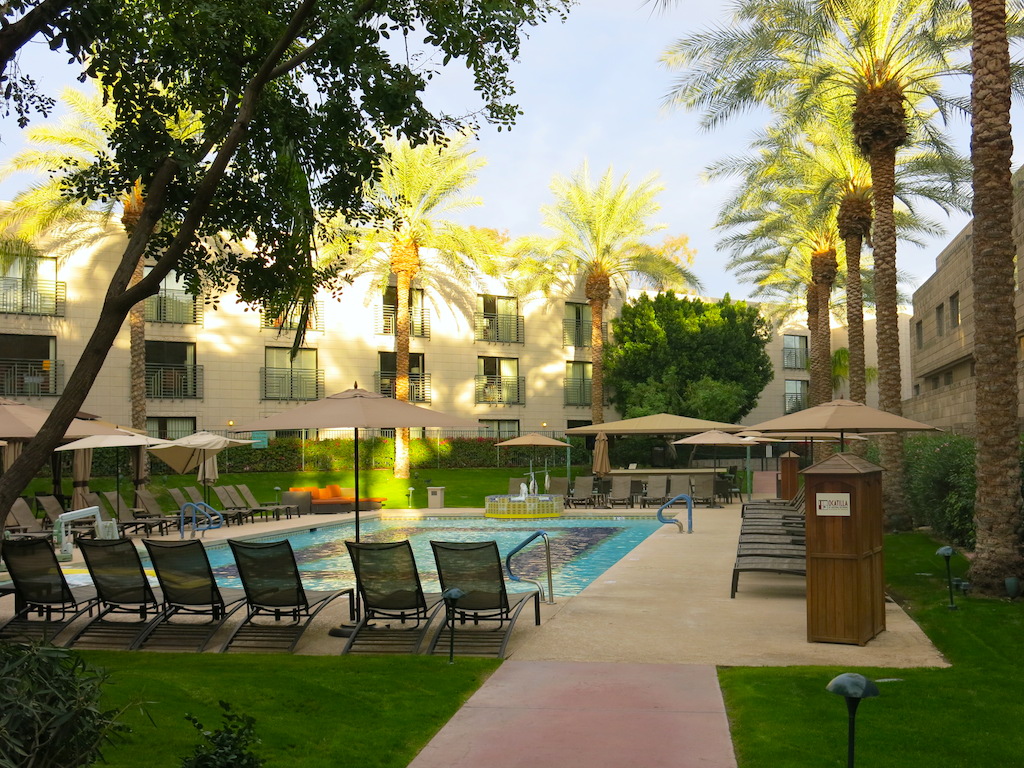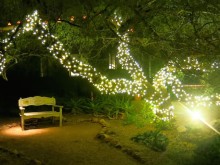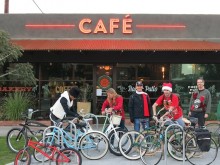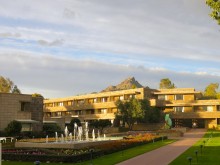Marilyn Monroe’s favorite pool is in the middle of the Sonoran Desert – and you, too, can swim there. Early in the morning at the Arizona Biltmore, you might even have it to yourself: you and the spirit of Marilyn floating in the desert.
For years, Arizona’s Sonoran Desert has served as a getaway for Hollywood stars and celebrities. Wisconsin-born architect Frank Lloyd Wright arrived in Phoenix in 1928, contending that there was “nothing more inspiring…than pure Arizona desert.”
If you, too, find yourself in need of desert inspiration and Marilyn Monroe-inspired relaxation, head to Phoenix and check in to the Wright-inspired Biltmore. Opened in February of 1929 during the depths of Prohibition and only months before the Great Depression, Arizona’s “Jewel of the Desert” quickly became a desert playground for the rich, the famous, and the powerful.
Now celebrating 85 years as Phoenix’s first resort, the Biltmore, a member of the Waldorf Astoria collection, is one of the world’s most iconic hotels. Architecture aficionados from around the world make a pilgrimage to witness Wright’s “organic architecture” in a setting that is as mesmerizing today as it was when it first captivated Wright.
In the years before commercial aviation, Arizona was as exotic to most Americans as another planet. Statehood wasn’t obtained until 1912, when Arizona became the last contiguous state admitted to the US – and in the 1950s, less than a million people lived in the entire state.
Today, Phoenix is the nation’s sixth-largest city and the nation’s most populated state capital. Spanning 519 square miles, metropolitan Phoenix is a collection of urban villages – a city familiar to any Los Angeleno who commutes from one neighborhood to another.
After a respite at the Biltmore, you might consider relocating to the Hyatt Regency Scottsdale Resort & Spa at Gainey Ranch. The “Beverly Hills of the Desert,” Scottsdale has more destination spas per capita than any other US city. At the Gainey Ranch, Wright’s architectural influence is evident throughout the 27-acre property with its garden courtyards and a two-acre water oasis with ten swimming pools. Colonnades of palms frame the breathtaking vistas of the McDowell Mountains and a recent $55 million renovation has given the suites and casitas a contemporary Southwestern cachet.
The Spa Avania at Gainey Ranch is a 21,000-square-foot sanctuary with 19 treatment rooms alongside a mineral pool, a lotus pond, and a gentlemen’s suite. Cited as one of the nation’s Top Thirty Spas by Spas of America, Spa Avania is named for the Greek word for “tranquil,” which defines the prevailing atmosphere.
For a glimpse of the Sonoran Desert’s majesty, take an evening stroll through Phoenix’s Desert Botanical Garden. With more than 50,000 plants (including 139 endangered species) spread across 140 acres, the garden offers desert specimens as surreal as a Tim Burton set. The installation Chihuly in the Garden (through May 18, 2014) magnifies the desert’s fantastical qualities by mingling Dale Chihuly’s extraordinary glass sculptures amidst equally arresting indigenous flora.
Phoenix’s must-see museums include MIM, the acronym for the Musical Instrument Museum, which is the first museum devoted to the collection and preservation of the world’s musical instruments. Home to more than 15,000 instruments, MIM offers guests an interactive musical experience, as well as collections from well-known musical artists.
In addition, MIM hosts special exhibitions, such as the current Women Who Rock (through April 20, 2014), which features costumes and artifacts from iconic artists. Lady Gaga’s meat dress, for example, and Madonna’s “Blonde Ambition” bustier. You know you can’t miss it.
For those interested in heritage, the acclaimed Heard Museum chronicles the art and culture of Native Americans in the Southwest. The current exhibition Georgia O’Keeffe in New Mexico (through March 3, 2014) provides insight into O’Keeffe’s fascination with Hopi katsina dolls, with works by the artist that have remained largely unknown and rarely displayed.
In nearby Tempe, home of Arizona State University, the nation’s largest student body roams the city streets in search of fun, food, and drink. Spend an evening at Stray Cat Theatre, one the best indie theatres in the Valley of the Sun – and then hitch up to a barstool at The Handlebar Tempe, a beer garden temple to brews, bratwurst – and bicycles. As with any other progressive US college town, Tempe has its own LGBT website, should you lose your tongue in front of the friendly locals.
Arizonans schooled in the 48th state learned the five C’s of Arizona: copper, cattle, cotton, citrus, and climate – so it shouldn’t be surprising that, of late, Phoenix has gained a reputation as a culinary capital. The advent of community gardens, small-scale agriculture, and rooftop gardens has produced a bounty of open-air markets, food trucks, and homegrown restaurants.
One of the best downtown neighborhoods for eating is East Evergreen, home to Phoenix Public Market, the state’s largest farmers’ market. Right next door is Phoenix Public Market Café, helmed by the Chamberlin brothers, the founders of Phoenix’s celebrated St. Francis restaurant. Buoyed by the success of St. Francis, the Chamberlins utilize produce from the farmers’ market to offer their inspired take on comfort food as filtered through the mind of a chef who trained in Jean-George Vongerichten’s kitchen.
Located along the Camelback Corridor, The Gladly is another new restaurant with well-deserved buzz for its urban sophistication in a comfortable setting. Orchestrated by the team behind Citizen Public House, home of Phoenix favorite “The Original Chopped Salad” (which, fortunately, is also on The Gladly’s menu), The Gladly gets it right from start to finish – and makes you glad you’re in Phoenix.
Throughout the year, LGBT Phoenix events include Pride, Rainbows Festival, Arizona Gay Rodeo, and Cactus Cities Softball League, all of which have contributed to the double-digit increases in LGBT tourism to Phoenix. Pick up a copy of the local LGBT magazines, ION and Echo, for complete listings of LGBT fun.
Of course there’s also the weather: more than 325 days of sunshine each year, a fact that nearly every native and transplant will share with you. Give in to the heat and do it in the desert – and then head back to the Biltmore for one more round.
Birthplace of the Tequila Sunrise, the Biltmore circumvented Prohibition with an in-house speakeasy called the “Mystery Room,” which has reopened for Sunday evening classic cocktails – so long as you’ve secured the password.
Take your cocktail out onto the terrace and gaze into the constellations that flicker above this desert playground. Then take a midnight dip in the Catalina Pool – wearing nothing but a drop of Chanel in honor of Marilyn.
ADDITIONAL INFORMATION: Click here for MRNY slideshow of Phoenix.
Editor’s Note: This feature was originally published in Frontiers LA in a slightly altered form.












